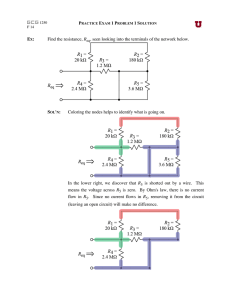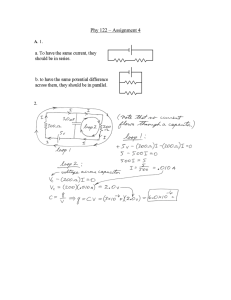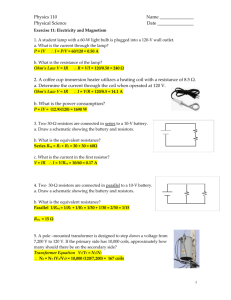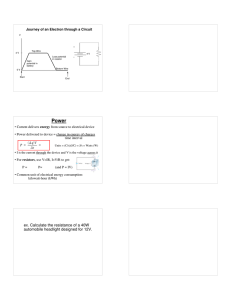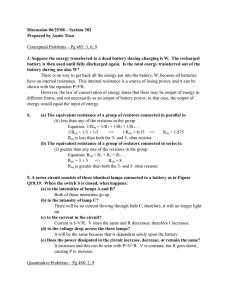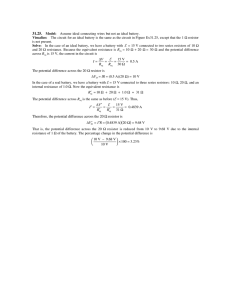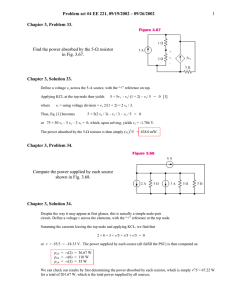DC Circuit Worksheet: Ohm's Law & Resistors
advertisement
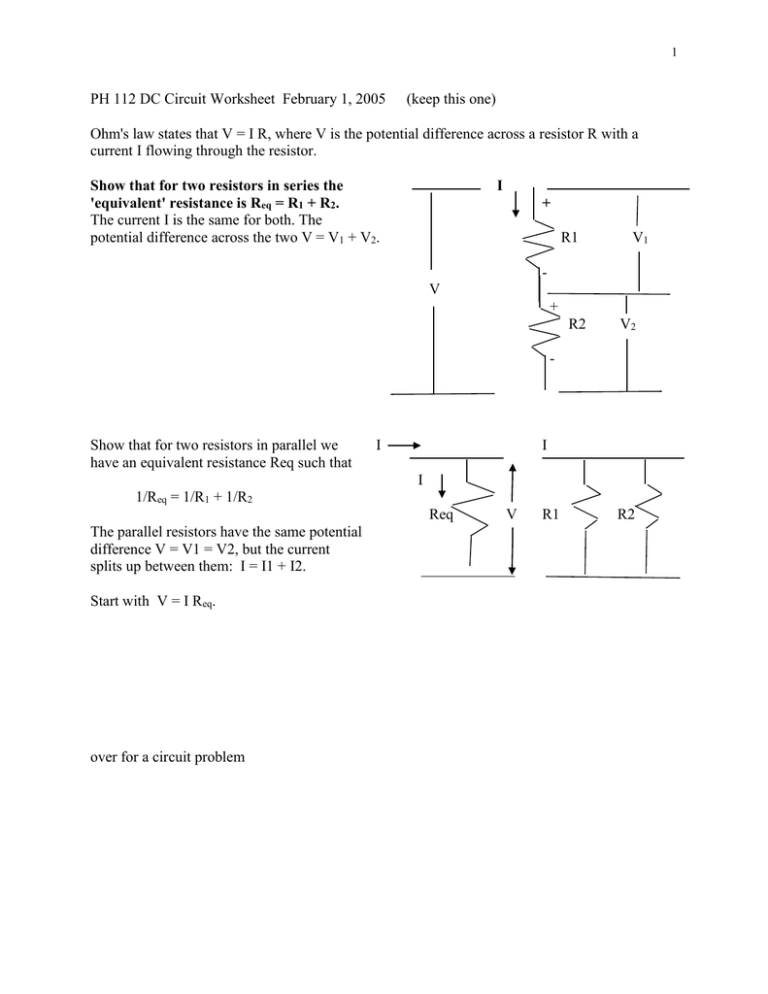
1 PH 112 DC Circuit Worksheet February 1, 2005 (keep this one) Ohm's law states that V = I R, where V is the potential difference across a resistor R with a current I flowing through the resistor. Show that for two resistors in series the 'equivalent' resistance is Req = R1 + R2. The current I is the same for both. The potential difference across the two V = V1 + V2. I + R1 V1 V + R2 V2 - Show that for two resistors in parallel we have an equivalent resistance Req such that I I I 1/Req = 1/R1 + 1/R2 Req The parallel resistors have the same potential difference V = V1 = V2, but the current splits up between them: I = I1 + I2. Start with V = I Req. over for a circuit problem V R1 R2 2 - + 2A 24v R I1 16 8 Use a loop equation to find the current I1. (Lefthand loop) Then find I2 by summing the currents at the top node. Finally, find R. (Use a loop equation.) a) I1 = 0.5 A b) I2 = 1.5 A c) R = 5.33 ohms I2


